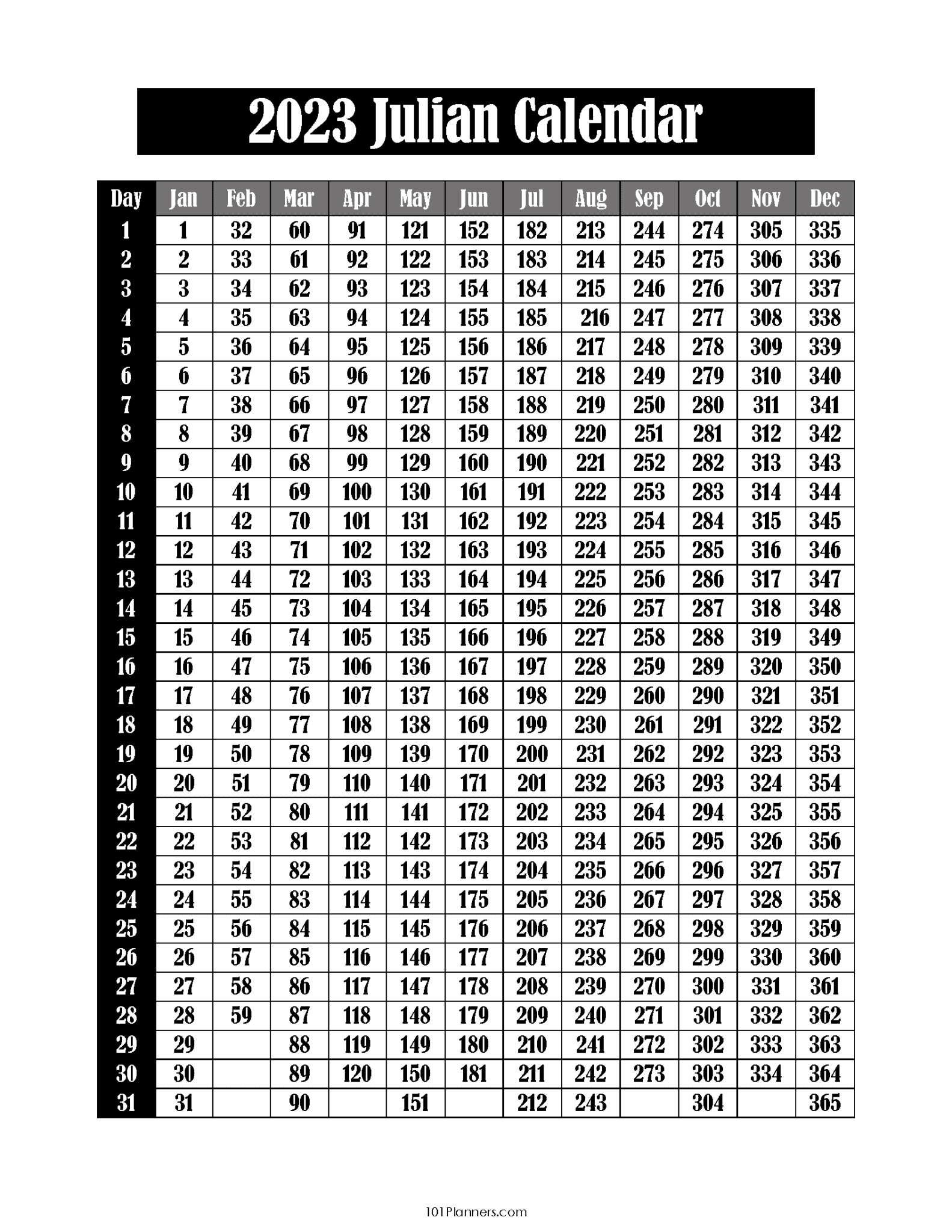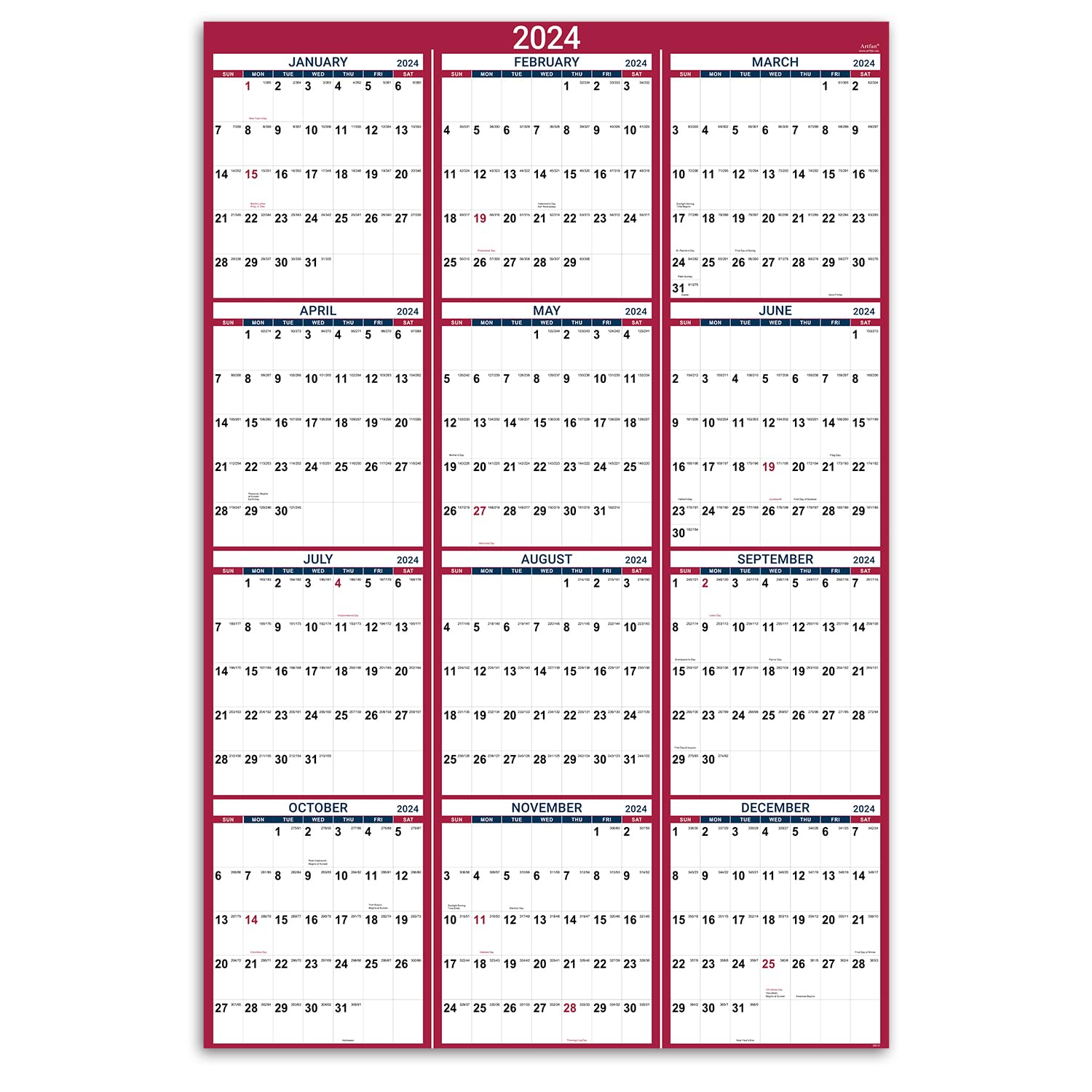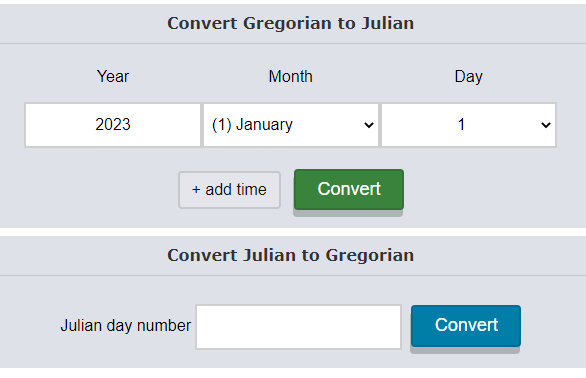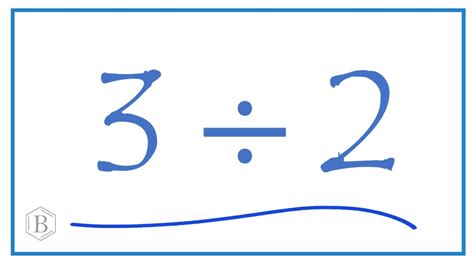Julian Date Insights: 3 Simple Tips.

In the world of astronomy and timekeeping, the Julian Date system holds immense importance and has a fascinating history. This system, rooted in ancient practices, provides a unique way to measure time and has numerous applications in modern astronomy and scientific research. Julian Dates offer a precise and standardized method for recording time, making it an essential tool for astronomers, scientists, and even financial analysts. In this article, we delve into the world of Julian Dates, exploring their origins, applications, and providing three simple yet insightful tips to enhance your understanding and utilization of this timekeeping method.
Understanding the Julian Date System

The Julian Date system, named after the Roman general and statesman Julius Caesar, is a chronological dating system primarily used in astronomy and science. It was introduced to simplify the calculation of time intervals, especially in celestial mechanics and historical studies. Unlike the traditional calendar, which can be complex with varying month lengths and leap years, the Julian Date system offers a continuous count of days, providing a straightforward and universal method for time measurement.
The Julian Date (JD) is calculated based on the number of days that have passed since a specific reference date, known as the Julian Epoch. This epoch is set at noon (12:00) on January 1, 4713 BCE, in the Julian Proleptic Calendar. From this starting point, each day is assigned a unique number, progressing sequentially. For example, the Julian Date for January 1, 2023, would be approximately 2459949.5, with the '.5' representing noon (12:00) when the day officially starts in the Julian system.
This continuous counting of days makes the Julian Date system incredibly useful for astronomical calculations, as it eliminates the complexities of varying month lengths and leap years. It allows for precise time measurements and simplifies the computation of time intervals between events, which is crucial in fields like astronomy, astrophysics, and even historical studies.
Applications of Julian Dates

The versatility of the Julian Date system extends across various fields, making it an indispensable tool for professionals and enthusiasts alike.
Astronomy and Astrophysics
In astronomy, Julian Dates are the standard for recording the timing of celestial events. Astronomers use JD to precisely mark the occurrence of phenomena like eclipses, conjunctions, and supernova explosions. This precision is vital for studying celestial mechanics, as it allows for accurate calculations of orbital periods, transit times, and other critical parameters.
For instance, when observing a distant exoplanet transiting its host star, astronomers can use Julian Dates to precisely record the timing of the transit. This data is then used to calculate the planet's orbital period and refine our understanding of its characteristics.
| Event | Julian Date |
|---|---|
| Solar Eclipse | 2459909.77778 |
| Lunar Eclipse | 2459927.42972 |
| Conjunction of Jupiter and Saturn | 2459931.61686 |

Historical Research
Julian Dates find application in historical research, especially when dealing with ancient texts and events. By converting historical dates to Julian Dates, scholars can accurately compare and analyze events that occurred across different eras and calendars. This precision is invaluable for historical chronology and helps in understanding the sequence and timing of significant historical occurrences.
Financial Analysis
Surprisingly, Julian Dates also play a role in financial markets. Some financial analysts use JD to perform precise calculations for interest accrual, especially in complex financial instruments. The continuous nature of Julian Dates ensures accurate interest calculations, which is crucial in high-frequency trading and complex financial strategies.
Three Simple Tips for Working with Julian Dates
Now that we understand the fundamentals and applications of Julian Dates, let’s explore three simple yet powerful tips to enhance your experience with this timekeeping system.
Tip 1: Converting Between Julian Dates and Traditional Calendar
While Julian Dates offer a straightforward way to measure time, many everyday tasks and records still use the traditional calendar. Thus, being able to convert between the two is essential. Fortunately, there are numerous online tools and calculators that can perform this conversion effortlessly. Simply input the desired date, and the tool will provide you with the corresponding Julian Date and vice versa.
For example, if you want to know the Julian Date for your birthday, you can use an online converter to find the precise JD. This conversion can be especially useful when cross-referencing historical events or when working with data that spans different timekeeping systems.
Tip 2: Understanding Julian Date Fractions
As mentioned earlier, Julian Dates often include a fractional part, such as ‘.5’ to represent noon (12:00). These fractions are crucial for precise time measurements, especially in astronomy and astrophysics. They indicate the exact time within a day when an event occurs.
For instance, if an astronomical event is recorded with a Julian Date of 2459949.25, it means the event occurred at 06:00 (halfway through the day) on January 1, 2023. Understanding these fractions is vital for accurate timekeeping and event synchronization.
Tip 3: Using Julian Dates for Event Planning
Julian Dates can be a powerful tool for event planning, especially for scientific conferences, astronomical observations, or historical re-enactments. By assigning a unique Julian Date to each event, you can easily organize and schedule activities, ensuring that they don’t overlap or conflict with other important celestial events or historical dates.
For example, if you're organizing a stargazing event, you can choose a date with clear skies and interesting celestial phenomena, such as a meteor shower or a planetary conjunction. Assigning a Julian Date to this event will make it easier to communicate and promote the event, ensuring that attendees know exactly when to mark their calendars.
Future Implications and Conclusion
The Julian Date system, with its continuous count of days, has proven to be an invaluable tool for timekeeping in astronomy, science, and even financial analysis. Its precision and universality make it an essential component of modern research and observation. As we continue to explore the cosmos and delve deeper into the intricacies of our universe, the Julian Date system will undoubtedly remain a vital tool for scientists and astronomers.
In conclusion, whether you're an astronomer tracking celestial events, a historian unraveling the chronology of ancient civilizations, or a financial analyst calculating interest accrual, the Julian Date system offers a simple yet powerful way to measure and understand time. By embracing these three simple tips and delving deeper into the world of Julian Dates, you can unlock a new level of precision and understanding in your field of expertise.
How accurate are Julian Dates for astronomical calculations?
+
Julian Dates are incredibly accurate for astronomical calculations, providing a precise method to measure time intervals. This accuracy is crucial for studying celestial mechanics and phenomena, allowing astronomers to make precise predictions and observations.
Can Julian Dates be used for everyday timekeeping?
+
While Julian Dates are primarily used in scientific and historical contexts, they can also be applied to everyday timekeeping. However, due to their continuous nature and lack of month/year distinctions, they may not be as intuitive for general use as traditional calendars.
Are there any limitations to using Julian Dates?
+
One limitation of Julian Dates is their lack of intuitive representation of time intervals. Unlike traditional calendars, where you can easily understand the duration between two dates, Julian Dates require additional calculations to determine the exact time difference. This can be a challenge when working with long time intervals.



